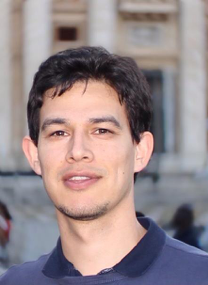Comprehensive UHPLC–MS/MS Lipidomics Profiling to Study the Effects of Betulin on Keratinocytes
The Column spoke to Carlos Calderón about his research project, investigating pharmacolipidomics analysis of betulin in human primary keratinocytes to monitor alterations in the lipid profiles induced by treatment with betulin.
nobeastsofierce/stock.adobe.com

The Column spoke to Carlos Calderón about his research project, investigating pharmacolipidomics analysis of betulin in human primary keratinocytes to monitor alterations in the lipid profiles induced by treatment with betulin.
Q. How did the idea of this research project arise and what are the aims of this research?
A: Our research collaboration partner, Irmgard Merfort from the University of Freiburg, Germany, has previously investigated the bioactivity of the natural compound betulin, a pentacyclic triterpene, which exerts a variety of different biological effects, including anti-cancer, anti-inflammatory, anti-fungal, and anti-viral activities. Studies have been conducted in her laboratory to explain the clinically proven wound-healing effects of betulin (1–3). Those studies found that betulin influences the inflammatory phase and the new-tissue-formation phase in the wound-healing process, which enhances keratinocytes migration and stimulates their differentiation.
In our laboratory, we decided to undertake a pharmacolipidomics analysis of betulin in human primary keratinocytes to monitor alterations in the lipid profiles induced by treatment with betulin.
Our goal was to clarify whether, or in which way, the lipophilic betulin may act on cell membranes, permeate membranes to enter the cell, or have an impact on the lipid profile of the cell.
Q. What are you doing in this research that is novel?
A: We performed a comprehensive description of the lipidome of human immortalized keratinocytes and their changes following treatment with betulin. The novel aspect of this research is the results detailing the changes in upregulation and downregulation of lipid species following betulin treatment. Additionally, for the identification of lipids we have employed a novel targeted data-processing approach combining the confidence given from the comparison of mass spectrometry (MS) and tandem mass spectrometry (MS/MS) fragmentation patterns, with the confidence given from the analysis of reversed-phase liquid chromatography (LC) elution patterns of lipids belonging to the same lipid class. Most lipidomic studies are based on dataâdependent acquisition (DDA) which acquires MS data comprehensively but only MS/MS data from the most abundant signals and for structural confirmation only. This means that when an MS signal is above a certain threshold an MS/MS experiment is triggered. It provides high-quality spectra for identification but no comprehensive MS/MS data across the peak and chromatogram which means no extracted ion chromatograms (EICs) can be generated on the MS/MS level. In our study based on independent data acquisition (IDA), EICs can be extracted on an MS/MS level, and can also be used for fragment ions, which provides additional options for data processing, higher confidence, and assay specificity (4).
Q. What were the main analytical challenges you had to overcome?
A: Our main analytical challenge was the identification of lipid species in the keratinocytes. Our untargeted LC–MS approach with data independent acquisition (DIA) using sequential window acquisition of all theoretical mass spectra (SWATH) analysis generates large amounts of data. Tools for processing the data and performing identification of lipids are available. However, many misidentifications are also obtained. These can insert bias into the findings of the study. For this reason, the aforementioned targeted MS data-processing was employed.
Q. What were your main findings and why are they useful?
A: We made a detailed characterization of the lipidome in keratinocytes. At the same time, we showed that there are significant differences in keratinocytes after treatment with betulin. In total, 611 lipids were identified at the “lipid species level” and 440 of them were shown to be significantly changed. Changes can be described in terms of lipid classes. Cholesteryl esters and diacylglycerides were significantly downâregulated in betulin-treated samples and glycerophospholipids, sphingolipids,
and diacylglycerides were up-regulated.
Additionally, it was observed that the presence of betulin in extracts of keratinocytes, which were previously treated with betulin and washed, indicated that betulin may be incorporated into the membrane of keratinocytes. Also, the presence of other triterpenes in samples treated with betulin and absent in control samples could represent betulin metabolized within the keratinocytes (4).
Q. How are you planning to develop this research further?
A: Based on the obtained results, we would like to develop more targeted experiments to determine how those changes in specific lipid classes following betulin treatment are related with the healing properties of the compound in the skin.
References
- U. Woelfle, M.N. Laszczyk, M. Kraus, K. Leuner, A. Kersten, B. Simon-Haarhaus, A. Scheffler, S.F. Martin, W.E. Müller, D. Nashan, and C.M. Schempp, J. Invest. Dermatol. 130, 113–123 (2010).
- S. Ebeling, K. Naumann, S. Pollok, T. Wardecki, S. Vidal-y-Sy, J.M. Nascimento, M. Boerries, G. Schmidt, J.M. Brandner, and I. Merfort, PLoS One9(1) e86147 (2014).
- T. Wardecki, P. Werner, M. Thomas, M.F. Templin, G. Schmidt, J.M. Brandner, and I. Merfort, J. Nat. Prod.79, 1112–1123 (2016).
- C. Calderón, L. Rubarth, M. Cebo, I. Merfort, and M. Lämmerhofer, Proteomics. 1900113 (2019).

Carlos Calderón won a poster award for this research at HPLC 2019 in Milan, when he was working at the University of Tubingen, Germany. He can be contacted at carloseduardo.calderon@ucr.ac.cr

Testing Solutions for Metals and PFAS in Water
January 22nd 2025When it comes to water analysis, it can be challenging for labs to keep up with ever-changing testing regulations while also executing time-efficient, accurate, and risk-mitigating workflows. To ensure the safety of our water, there are a host of national and international regulators such as the US Environmental Protection Agency (EPA), World Health Organization (WHO), and the European Union (EU) that demand stringent testing methods for drinking water and wastewater. Those methods often call for fast implementation and lengthy processes, as well as high sensitivity and reliable instrumentation. This paper explains how your ICP-MS, ICP-OES, and LC-MS-MS workflows can be optimized for compliance with the latest requirements for water testing set by regulations like US EPA methods 200.8, 6010, 6020, and 537.1, along with ISO 17294-2. It will discuss the challenges faced by regulatory labs to meet requirements and present field-proven tips and tricks for simplified implementation and maximized uptime.
A Guide To Finding the Ideal Syringe and Needle
January 20th 2025Hamilton has produced a series of reference guides to assist science professionals in finding the best-suited products and configurations for their applications. The Syringe and Needle Reference Guide provides detailed information on Hamilton Company’s full portfolio of syringes and needles. Everything from cleaning and preventative maintenance to individual part numbers are available for review. It also includes selection charts to help you choose between syringe terminations like cemented needles and luer tips.
Oasis or Sand Dune? Isolation of Psychedelic Compounds
January 20th 2025Magic mushrooms, once taboo, have recently experienced a renaissance. This new awakening is partially due to new findings that indicate the effects of psilocybin, and its dephosphorylated cousin psilocin may produce long lasting results for patients who might be struggling with anxiety, depression, alcohol and drug abuse, and post-traumatic stress disorder. Hamilton Company has developed a methodology for the isolation and identification of 5 common psychedelic compounds used in the potential treatment of disease. The PRP-1 HPLC column resin remains stable in the harsh alkaline conditions ideal for better separations.
GPCRs – The Biological Traffic Modulator: Chromatographic Analysis of Peptides in the GI Tract
January 20th 2025The G protein-coupled receptors (GPCR) are found throughout the entire body and have shown significance in the development of new therapeutic treatments. Isolation of seven classic GRPC peptides initiating in the GI tract highlights the benefits of using the polymer-based PRP-3, a reversed-phase resin. The covalent bonds found in the PRP-3 exhibit advantageous interactions between the biological π bonds found in the peptides and the available aromatic benzyl rings of the resin.